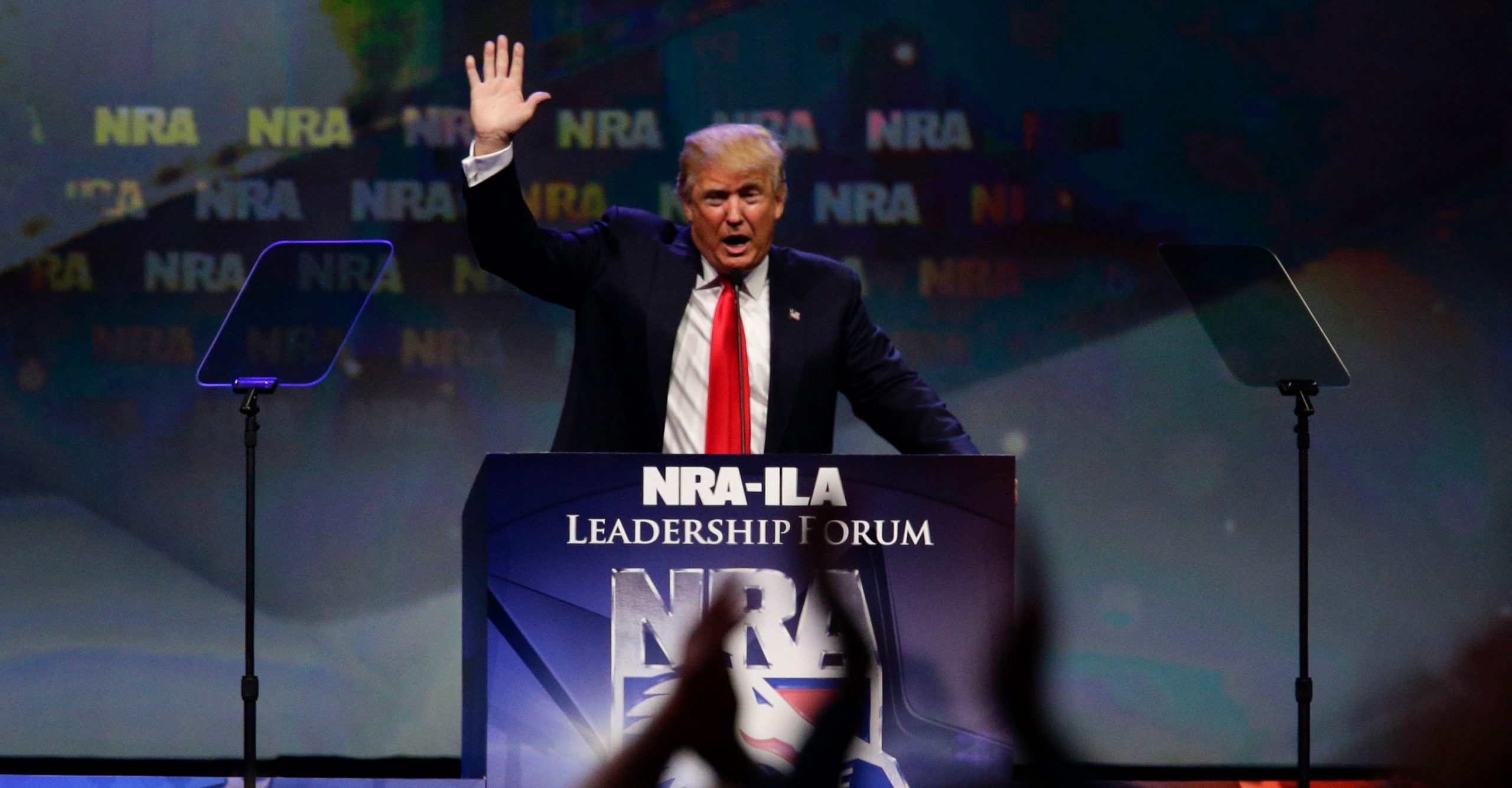Last week, after much debate, Cleveland’s police chief announced that attendees of the Republican National Convention would be within their rights to openly carry firearms outside the convention hall. That the announcement was necessary at all demonstrates the extent to which the Republican Party has linked itself to the gun rights movement.
Its close relationship with the National Rifle Association has developed as the GOP has aligned itself with pro-gun factions. The NRA’s own shift — from a hobbyist group into a politically focused organization dedicated to Second Amendment defense — became apparent in the 1970s, when the group lobbied lawmakers to relax restrictions on firearms. Throughout the 1980s, while often working in lockstep with the GOP, it still maintained a vast array of Democratic allies, especially in the South. Young lawmakers like Al Gore coveted the organization’s endorsement. As a congressman in Tennessee, he voted against putting serial numbers on firearms. In 1986, as a senator, Gore said gun control laws “haven’t been an effective solution to the underlying problem of violent crime.”
In the 1990s, as vice president, Gore would embrace some gun restrictions. And so would the NRA, moving decidedly in the direction of a single-party organization after the passage of the 1994 assault weapons ban. Over the following decades, the relationship between the NRA and Democrats continued to sour, and the group put more and more financial muscle into electing Republicans. By the party’s 2016 presidential primary contest, mainstream Republicanism held scant room for moderation on gun policy, leaving candidates divided over issues like immigration and trade all scrambling to portray themselves as the most ardent representative of the NRA’s increasingly hardline platform.
The Republican National Convention is now underway in Cleveland. On Tuesday, the NRA’s top lobbyist, Chris Cox, is scheduled to speak. Here’s how the GOP became the party of the NRA, in 16 steps.

